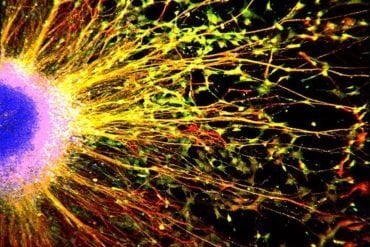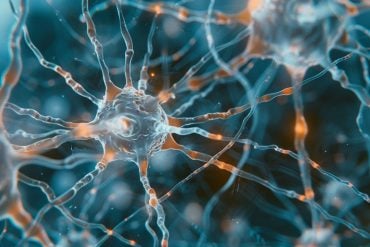Summary: Researchers report the anatomical structure of our prefrontal cortex may predict how well we stick to healthy eating diet plans.
Source: SfN.
Differences in the structure of the prefrontal cortex predict an individual’s ability to make healthier food choices, according to a new analysis of previous research in healthy men and women. The paper, published in Journal of Neuroscience, suggests an important role of these anatomical markers in decisions that have long-term effects on health and wellbeing.
Maintaining a healthy diet requires consistently choosing healthy foods over perhaps more tempting ones that may satisfy an immediate craving but have negative health consequences. People vary in their ability to exercise such self-control, which has been linked to individual differences in real-time brain activity. In this study, Liane Schmidt and colleagues examined whether more stable differences in the anatomy of the brain could account for variations in self-control.

Analyzing data pooled from three previous studies and generalizing their results to a fourth independent dataset, the researchers found that greater volume in the dorsolateral and ventromedial prefrontal cortex was associated with improved dietary self-control across different diet goals and participant groups. Since brain structure, like connectivity, can change over time in response to lifestyle, these brain regions represent key targets to explore in the design of interventions that promote healthy choices.
Funding: Agence Nationale de la Recherche funded this study.
Source: David Barnstone – SfN
Publisher: Organized by NeuroscienceNews.com.
Image Source: NeuroscienceNews.com image is credited to Schmidt et al., JNeurosci (2018).
Original Research: Abstract for “Neuroanatomy of the vmPFC and dlPFC predicts individual differences in cognitive regulation during dietary self-control across regulation strategies” by Liane Schmidt, Anita Tusche, Nicolas Manoharan, Cendri Hutcherson, Todd Hare and Hilke Plassmann in Journal of Neuroscience. Published June 4 2018.
doi:10.1523/JNEUROSCI.3402-17.2018
[cbtabs][cbtab title=”MLA”]SfN “Brain Structure May Predict Diet Success.” NeuroscienceNews. NeuroscienceNews, 4 June 2018.
<https://neurosciencenews.com/brain-structure-diet-9250/>.[/cbtab][cbtab title=”APA”]SfN (2018, June 4). Brain Structure May Predict Diet Success. NeuroscienceNews. Retrieved June 4, 2018 from https://neurosciencenews.com/brain-structure-diet-9250/[/cbtab][cbtab title=”Chicago”]SfN “Brain Structure May Predict Diet Success.” https://neurosciencenews.com/brain-structure-diet-9250/ (accessed June 4, 2018).[/cbtab][/cbtabs]
Abstract
Neuroanatomy of the vmPFC and dlPFC predicts individual differences in cognitive regulation during dietary self-control across regulation strategies
Making healthy food choices is challenging for many people. Individuals differ greatly in their ability to follow health goals in the face of temptation, but it is unclear what underlies such differences. Using voxel-based morphometry (VBM), we investigated in healthy humans (i.e., men and women) links between structural variation in gray matter volume and individuals’ level of success in shifting toward healthier food choices. We combined MRI and choice data into a joint dataset by pooling across three independent studies that employed a task prompting participants to explicitly focus on the healthiness of food items before making their food choices. Within this dataset, we found that individual differences in gray matter volume in the ventromedial prefrontal cortex (vmPFC) and dorsolateral prefrontal cortex (dlPFC) predicted regulatory success. We extended and confirmed these initial findings by predicting regulatory success out of sample and across tasks in a second dataset requiring participants to apply a different regulation strategy that entailed distancing from cravings for unhealthy, appetitive foods. Our findings suggest that neuroanatomical markers in the vmPFC and dlPFC generalized to different forms of dietary regulation strategies across participant groups. They provide novel evidence that structural differences in neuroanatomy of two key regions for valuation and its control, the vmPFC and dlPFC, predict an individual’s ability to exert control in dietary choices.
SIGNIFICANCE STATEMENT
Dieting involves regulating food choices in order to eat healthier foods and fewer unhealthy foods. People differ dramatically in their ability to achieve or maintain this regulation, but it is unclear why. Here, we show that individuals with more gray matter volume in the dorsolateral and ventromedial prefrontal cortex are better at exercising dietary self-control. This relationship was observed across four different studies examining two different forms of dietary self-regulation, suggesting that neuroanatomical differences in the vmPFC and dlPFC may represent a general marker for self-control abilities. These results identify candidate neuroanatomical markers for dieting success and failure, and suggest potential targets for therapies aimed at preventing or treating obesity and related eating disorders.






